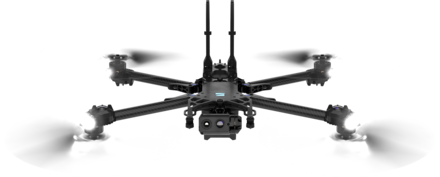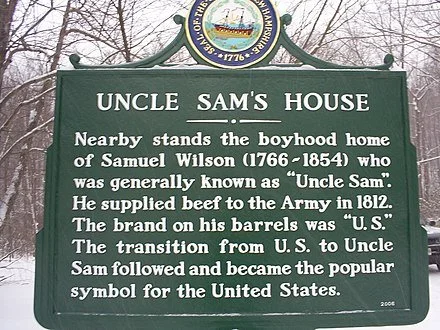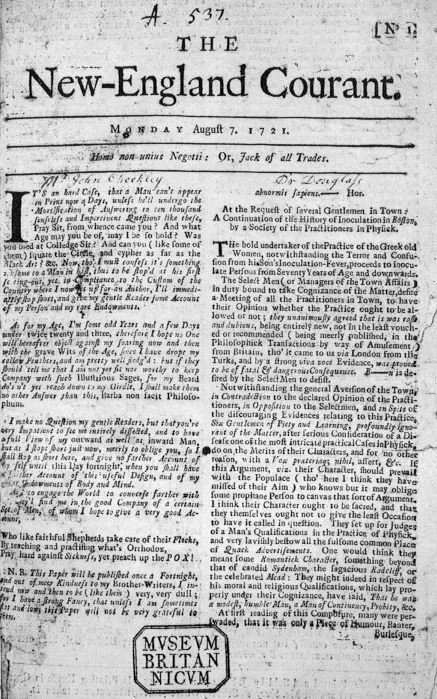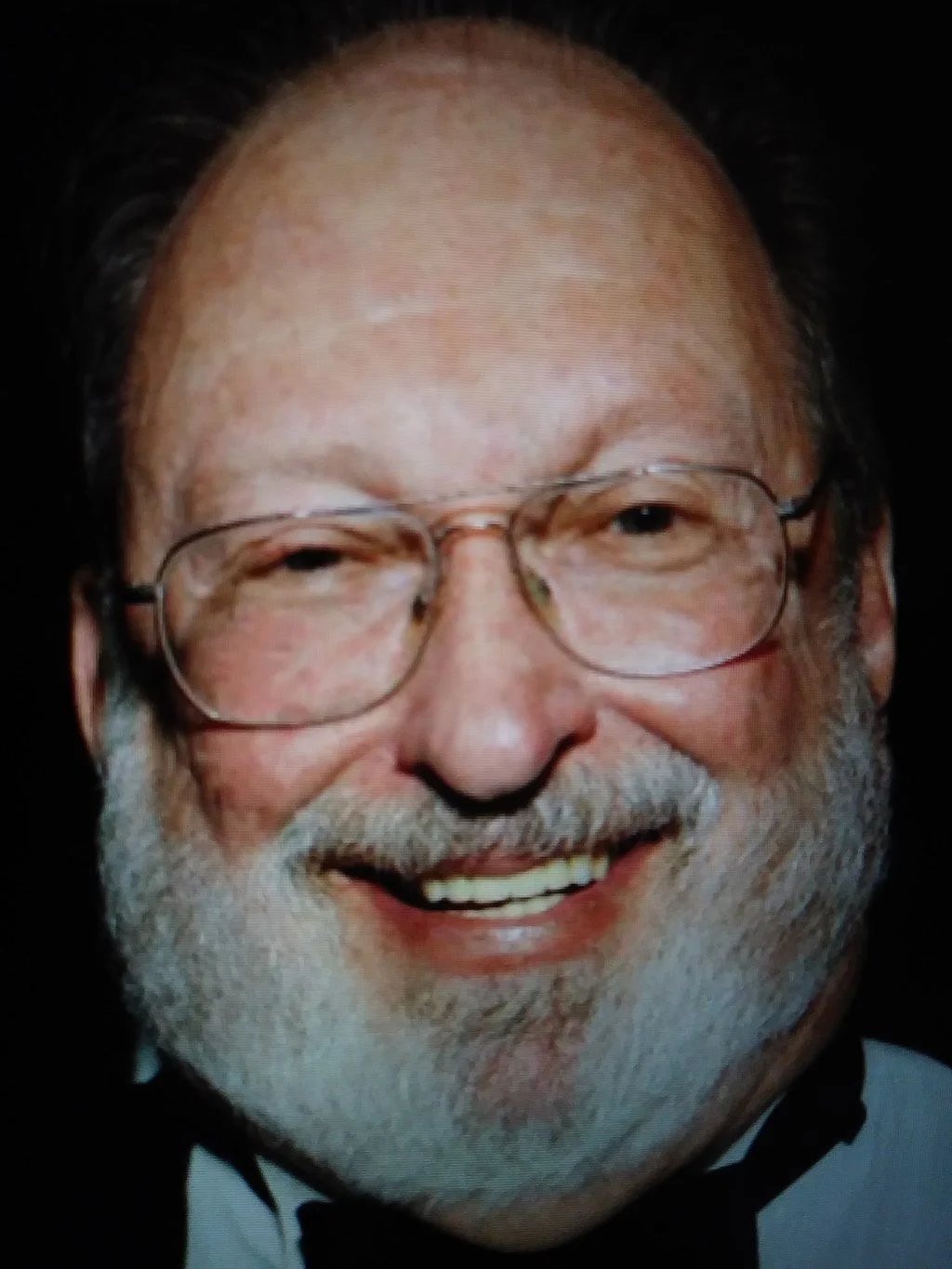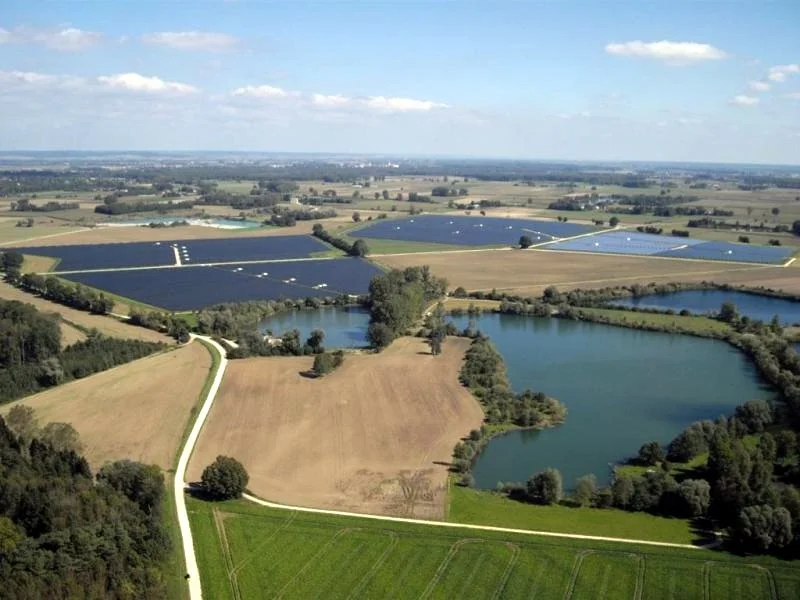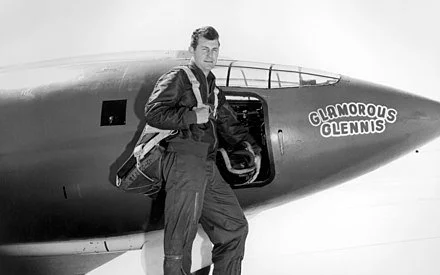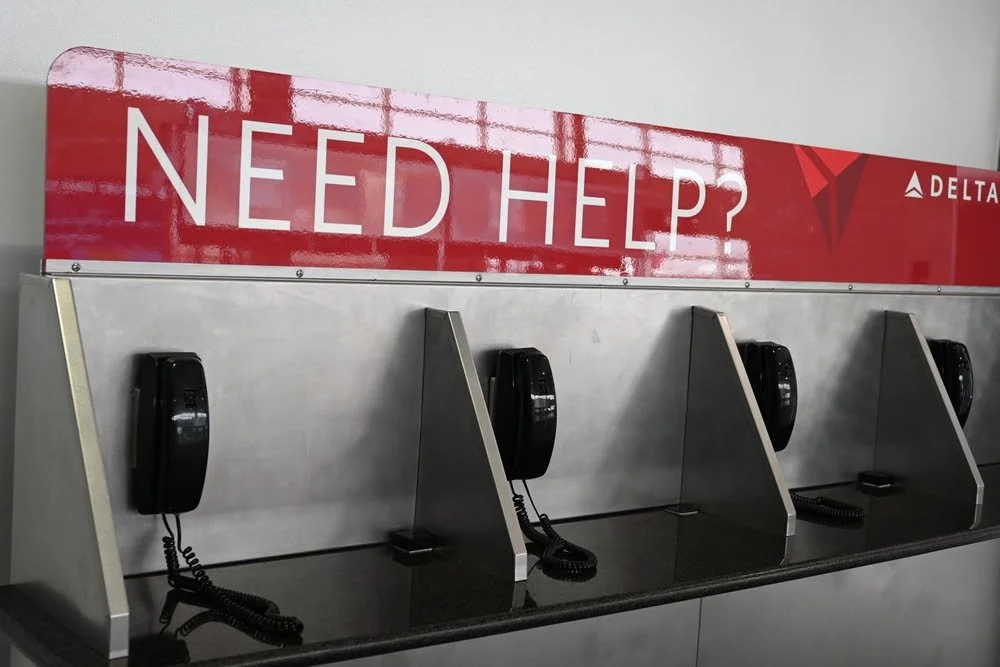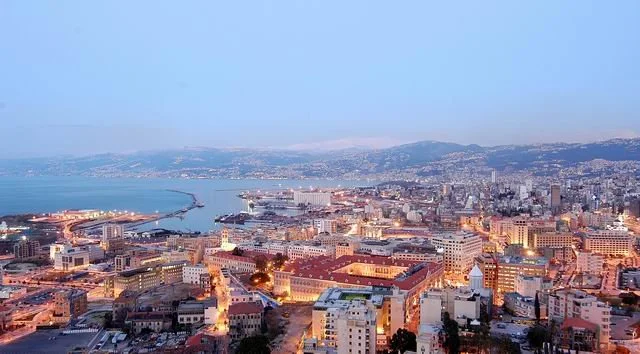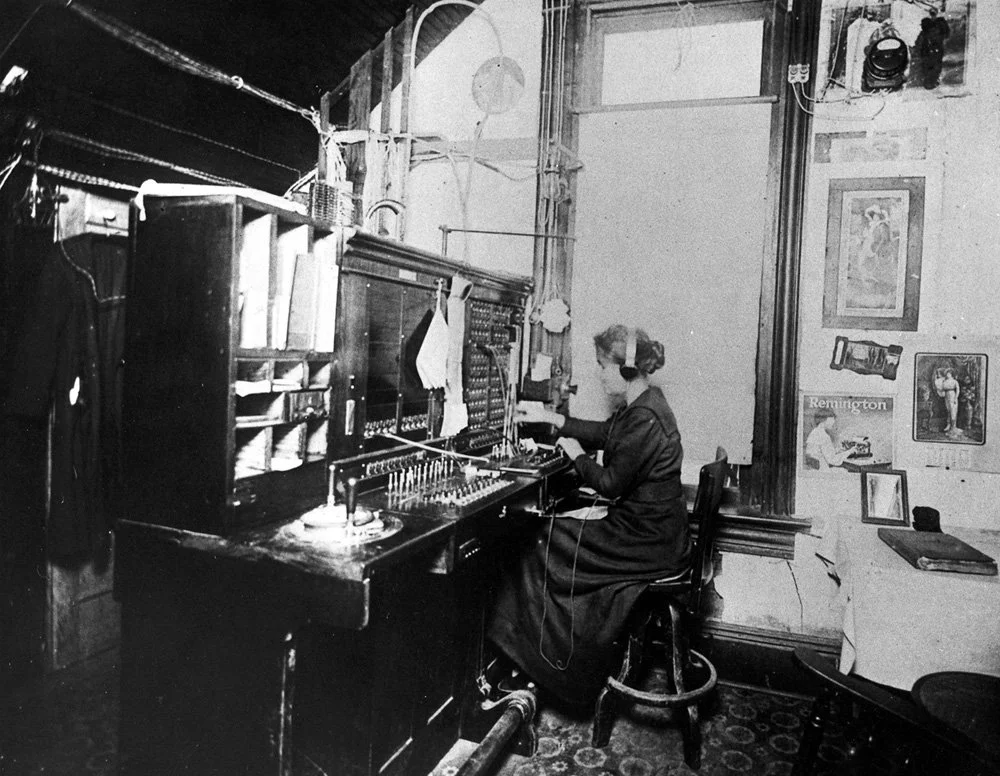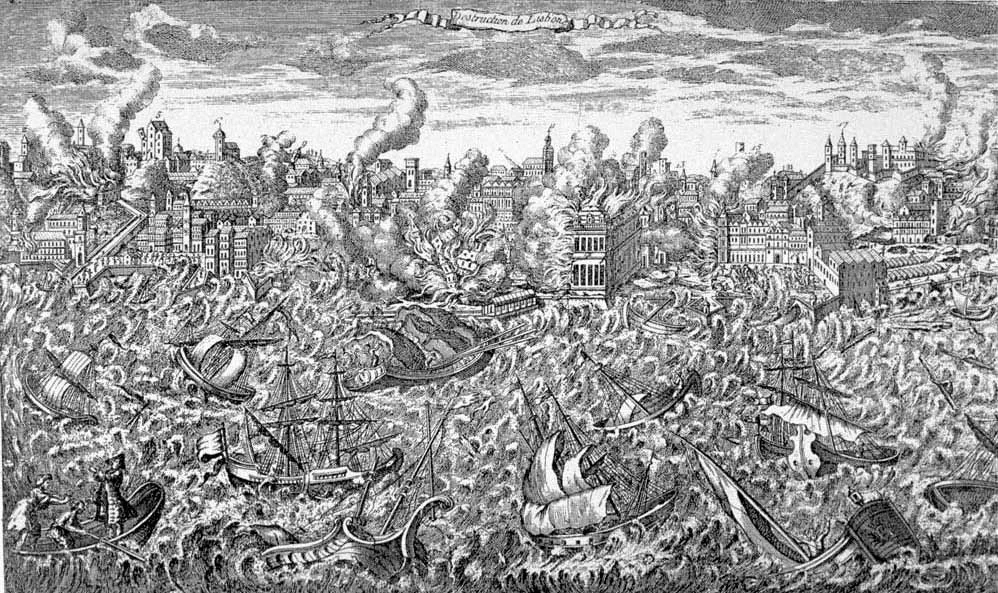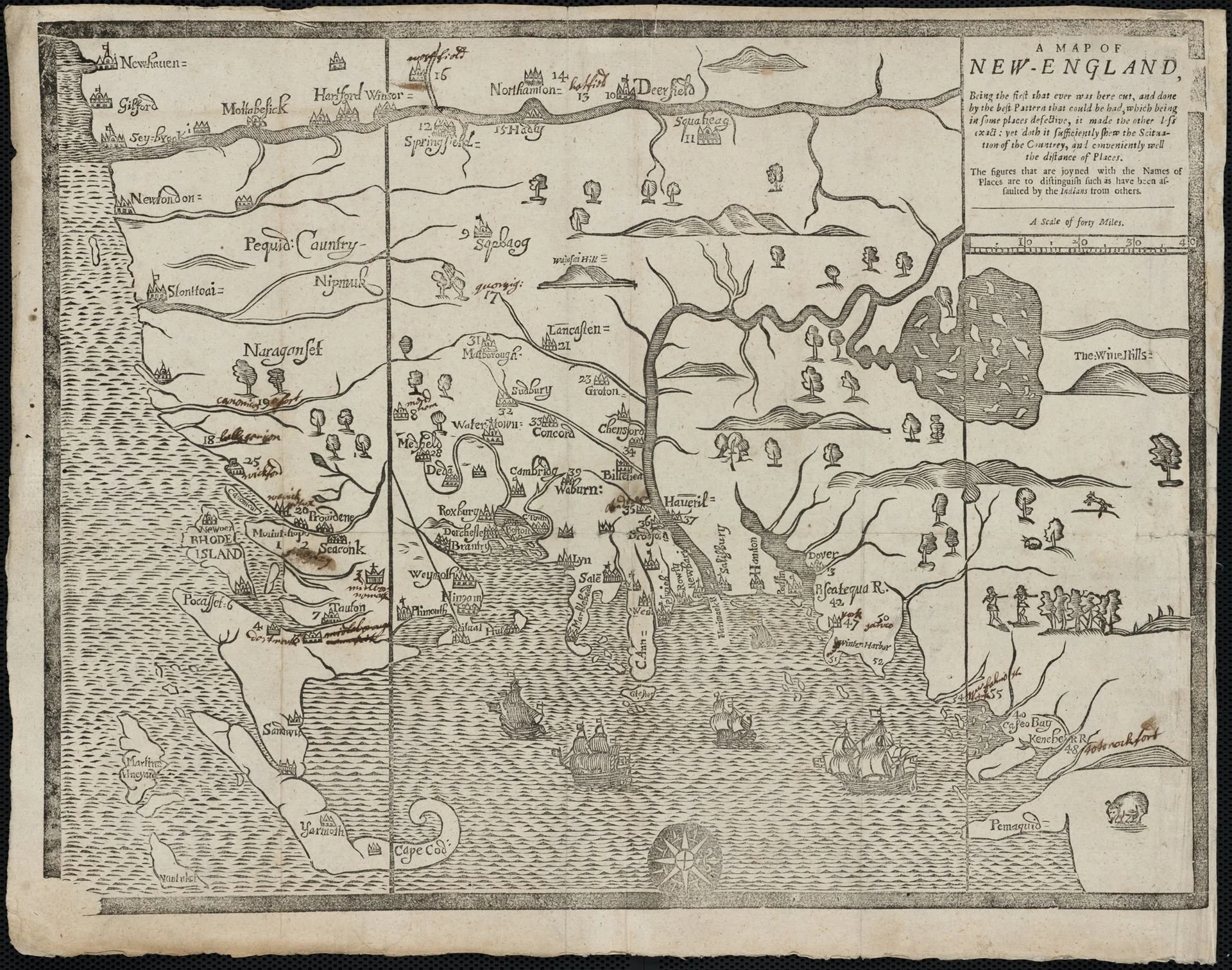
Llewellyn King: Pray tell, Oracle, how we get out of this
“Consulting the Oracle,’’ by John William Waterhouse (1849-1917)
WEST WARWICK, R.I.
When the ancient Greeks wanted to learn what their future held, they would consult with oracles. Alexander the Great, for one, visited the Oracle at Siwa, an oasis in the Egyptian desert. According to his biographer, Plutarch, the oracle told Alexander that he was destined to conquer the world.
In these tumultuous days when we, the electorate are offered a choice between an old, old president and his daffy vice president and a slightly less old vengeful reprobate with a persecution complex, I did the smart thing: I consulted the oracle.
No, I didn’t cross the desert on a camel, nor as Alexander did on his much-loved horse, Bucephalus, nor in a snazzy BMW SUV.
I did go to the oracle of the day, which is the only place I know to seek and get what seems to be extraterrestrial advice: the Bing AI. I asked the oracle several questions and got some interesting answers.
When it came to the big question, I beseeched the Bing AI, “Great Oracle, I am an American voter, and I am in an awful tizzy. I don’t know whom to support in the next presidential election.
“It seems to me that one candidate, President Joe Biden, a decent man, may be too old to navigate the difficult waters ahead in domestic and international affairs.
“As for another candidate, former President Donald Trump, many people find aspects of his conduct reprehensible.
“What to do? For me, this is even harder because I am a columnist and television commentator, and I need to have something to say. I am sure you understand, Great Oracle.”
Well, the Bing AI, clammed up: It delivered only the formal histories of both men.
I had thought my question would spark a revelation, a wise analysis, or a contradiction of my view of the candidates. Clearly, I shall have to wait for the day when I get into real AI chat: ChatGPT.
Mostly, I had thought that the oracle would tell me that all the presidential hopefuls so far will be toast by November 2024; that new candidates will bring us hope, fire up party enthusiasm and let rip.
Are new faces and new choices too much to hope for?
Republicans are wrestling with their prospective candidate after his latest character stain: He has been found liable for defamation and sexual abuse in a civil trial. What does this mean for the whole issue of what we look for in the character of candidates? Rectitude was once considered essential. Not for Trump. Post-Trump is post-rectitude.
Just under 70 percent of the electorate have told pollsters that they think Biden is too old to run for re-election. That isn’t, I submit, a conclusion arrived at by pondering what it means to be 80. That is a conclusion, again I submit, they have come to by looking at the president on TV — on the few occasions they see him there.
Clearly, he doesn’t have the strength or the confidence to hold a press conference. These are vital.
In America, the press conference is the nearest thing we have to question time in the British House of Commons. It is the time of accounting. Biden is behind in his accounting as audited by the press corps.
Harold Meyerson, editor at large of The American Prospect, is avowedly liberal. He is one of the most skillful political writers working today; deft, informed, convincing, and you know where he stands. He stands with the Democrats.
So, it is significant when he raises a question about Biden and when he draws attention, as he did on May 9, to Biden’s absence from public engagement.
Meyerson wrote, “Right now, the Democrats are drifting uneasily toward a waterfall and hoping Biden can somehow navigate the looming turbulence. By autumn, if he hasn’t had some measurable success in … allaying much of the public’s fears of a president drifting into senescence, then some prominent Democrat (a category that doesn’t include Robert Kennedy Jr. or Marianne Williamson) had damn well better enter the race.”
Llewellyn King is executive producer and host of White House Chronicle, on PBS. His email is llewellynking1@gmail.com, and he’s based in Rhode Island and Washington, D.C.
The Centerville Mill, in West Warwick
Llewellyn King: America is desperate for skilled tradespeople
WEST WARWICK, R.I.
There is a terrible shortage of people who fix things. I am thinking of electricians, plumbers, glaziers, auto mechanics, and many more skilled workers who keep life livable and society running.
It is frustrating if you can’t get a plumber when you need one. But the skilled- workers shortage has much larger consequences than the inconvenience of the homeowner. The very rate of national progress on many fronts is being affected.
More housing is desperately needed, but architects tell me that some new construction isn’t happening because of the skilled-workers shortage. Projects are being shelved.
The problem in electric utilities is critical — and interesting because they offer excellent pay, retirement and health care and still, they are falling short of recruits. They are very aware that many of their workers will be retiring in the next several years, adding to the problem. One utility, DTE, in Michigan, has been training former prisoners in vegetation control — the endless business of trimming trees around power lines.
Auto dealerships are scrounging for mechanics, now euphemistically called “technicians.”
Skilled workers are in short supply for the railroad and bridge industries. Many industries are prepared to offer training.
The need is great and it is having a quietly crippling effect on national prosperity.
President Joe Biden has been almost ceaselessly promoting solar and wind generation as job creators. Someone should tell him there is a severe shortage of those same electricians, pipe fitters, wind farm erectors and solar- panel installers.
The skilled-workers shortage has been worsening for some time, but it is now palpable.
There are contributory factors that have been building: The end of the draft meant an end to a lot of trade schooling in the military. Many a youth learned electronics, motor repair or simply how to paint something from Uncle Sam. That’s the generation that’s now retiring.
Then there is the education imbalance: We encourage too many below-average academic students to go to college. It is part of the credentialing craze.
Those less suited to academic life seek easier and easier courses in lesser and lesser colleges just to come out with a bachelor’s degree — a certificate that passes for a credential.
The result is a glut on the market of workers with useless degrees in such things as marketing, communications, sociology and even journalism. I can tell you that if you arrive in college in need of remedial English, your future as a journalist is likely to be wobbly.
Since childhood, I have been impressed with people who fix things: People like my father. He fixed everything from diesel engines to water well pumps, burst pipes and sagging roofs.
Men, and some women, of his generation worked with their hands but they were, in their way, Renaissance people. They knew how to fix things from a cattle feeder to a sewing machine, from a loose brick in a wall to a child’s bicycle to a boiler.
The work of fixing, of keeping things running, isn’t stupid work; it involves a lot of deduction, much knowledge and acquired skill.
Men and women who fixed things were at one with men and women who made things, often bound together in a common identity inside a union.
Think of the great names of the unions of the past, and the sense of pride members once took in their belonging: the International Ladies’ Garment Workers’ Union, the Teamsters or the United Autoworkers. You had work and social dignity. You weren’t looked down upon because you hadn’t been to college.
We aren’t going to quickly bring back honor to manual work or reverence for the great body of people who keep everything running. So we might look to the hundreds of thousands of skilled artisans who would do the work if they could enter the United States legally. Yes, the migrants milling at the southern border. Many skilled welders, plumbers and masons are yearning to cross the border and start fixing the dilapidated parts of this country.
The owner of a clothing factory told me that she was desperate to find women who could sew. She said that it is a skill that has just disappeared from the American workforce. A landscape contractor in Washington told me he would close without his Mexican workers.
A modest proposal: Let us write immigration law on the basis of who is really needed. Add to this a work permit dependent on fulfilling certain conditions. You would soon find company recruiters mingling with the border agents along the Rio Grande.
And we would lose our fear of a burst pipe. Help is just a frontier away.
Llewellyn King is executive producer and host of White House Chronicle, on PBS. His email is llewellynking1@gmail.com, and he’s based in Rhode Island and Washington, D.C.
Linda Gasparello
Co-host and Producer
"White House Chronicle" on PBS
Mobile: (202) 441-2703
Website: whchronicle.com
Llewellyn King: To stressed out wait staff — please don’t ask me
The White Horse Tavern, in Newport, R.I., built before 1673, is believed to be the oldest tavern building in the United States.
Union Oyster House, in Boston, opened to diners in 1826, and is among the oldest operating restaurants in the United States. It’s the oldest known to have been continuously operating since it was opened.
Sometimes I dine in fancy restaurants with starched white tablecloths, napkins and professional waiters; waiters who don’t ask me throughout the meal, “How is your food so far, sir?” To pestering waiters, I want to say, “If I am capable of ordering a meal, I am also capable of calling you to the table and telling you if the soup is cold, the fish is old, or the bread is stale.”
That is an occasional indulgence and reminds me of the time when, between journalistic gigs, I worked at a high-end restaurant in New York. It even featured a big band, Les Brown and His Band of Renown.
My wife and I frequently dine somewhere local, usually a pub-type eatery. After a while, you learn what they are good at and order accordingly. You are resigned to vinyl tablecloths and flimsy paper napkins.
And I resign myself to being asked at least three times some variant of “How is it so far?” The answer, which like other diners I never have the moral courage to voice, should be, “Go away! You are spoiling my dinner with an insincere inquiry about the comestibles. I am eating, aren’t I?”
Maybe these waiters should ask the chef how the food is for starters — it is too late by the time it gets to the table.
The other dinner-spoiling intrusion, if you don’t have a professional, is the young waiter who wants you to be their life coach. It begins something like this, “I am not really a waiter. I am studying sociology. Do you think I should switch my major to journalism?”
I am tempted to reply, “I don’t know anything about sociology and it is damn hard to make a living in journalism these days. But there is a huge shortage of plumbers. You might try an apprenticeship somewhere and give up college.”
Give up waiting tables, too, I hope.
Please don’t misunderstand; I love restaurants. It cheers me up to eat out. I rank towns with a vibrant restaurant culture as high on the quality-of-life scale.
I am writing this from Greece, where a cornucopia of restaurant choices beckons everywhere, from avgolemono soup to taramasalata. I am all in.
When your mouth is full, the awful business of asking you how the chef’s skills are that day doesn’t seem to be part of the continental culture. That, I find, is an egregious weakness of the English-speaking nations.
But the business of interrogating you about your breakfast, lunch or dinner isn’t confined to when you are at the table. If you make a reservation online, using one of the booking services, you will be pursued afterward, sometimes for days, by annoying questions about the restaurant’s food and ambiance, and the service.
The multiple-choice questions follow a formula like this, “On a scale of one to 10, how would you rate your dining experience?” How do you explain that you loved the meal except for flies diving into your plate? Is that a one because of the flies, or a 10 because of the food? Splitting the difference with a five explains neither the failure nor the success.
A restaurant in Washington, D.C., once specialized in delicious roast beef sandwiches. They were the creation of the man who owned the restaurant, and he had cuts of beef, a sauce and rolls all made for the purpose.
But once I can remember, there was a distinct problem: A rat appeared next to a colleague when he was tucking into the sandwich.
How do you rate that dining experience when Yelp sends its questionnaire? Do you rate the food as a resounding 10 but the ambiance as one? How would the number-crunchers rate that in the overall dining experience?
Knowing how they like to seek averages, my suspicion is the roast beef eatery would have rated a five.
I read somewhere that during the Siege of Paris in 1870-71, an entrecote (a sirloin steak) was a slice of a rat. For years, I wondered about that place in Washington and its excellent roast beef sandwiches.
I would rather eat with an annoying server than a fraternizing rodent. Bon appetit!
On Twitter: @llewellynking2
Llewellyn King is executive producer and host of White House Chronicle, on PBS.
Linda Gasparello: Painting in solidarity with Ukraine
“Ukraine Wheat and Sky,’’ by Lloyd Kelly.
When war, such as the one in Ukraine, breaks out, writers and artists are never impotent. Writers have the power of the pen and artists have the power of the brush.
Through the centuries to today, they have used their creative talents as war propagandists or protestors. The Russian invasion of Ukraine has inspired works in protest worldwide.
In Louisville, Ky., renowned artist Lloyd Kelly has painted in solidarity with Ukraine.
“When I saw Ukrainian children being bombed by the Russians, I felt I had to do something that shows support for the Ukrainian people,” Kelly said.
His picture titled “Ukraine Wheat and Sky” is small, but not its message.
From a distance, it depicts the flag of Ukraine. But moving closer, you can see what Kelly called “its tension and motion.”
“I underpainted it with complimentary colors — blue on orange and yellow on violet — to create a tension. And the diagonal lines [from the blue sky to the golden yellow wheat of the flag’s colors] show a motion, a fluidity, like the wind blowing the fabric of the flag,” he explained.
Kelly said that he didn’t want the flag to be sentimental — a dreamy, wispy image. “I underpainted it because I wanted it to be substantial.” A painting of solidarity.
He has felt so strongly about the suffering in Ukraine that he couldn’t sell it. “Selling it just didn’t feel right. So I gifted it to people who support Ukraine in a very concrete way.”
Kelly’s painting captures on canvas what Ukrainian President Volodymyr Zelensky said so poignantly in a television interview with David Letterman, “This blue color is a color of life; a color of the sky, space and freedom. The flag doesn’t have any images of planes or missiles in the sky, any traces of gunshots.
“These two colors are the country of where I was born, the country we are fighting for.”
Kelly exhibits at The Christina Gallery, in Edgartown, Mass. His studio address is www.lloydkelly.com.
Linda Gasparello is co-host and producer of White House Chronicle, a weekly news and public affairs program that airs nationwide on PBS and elsewhere.
Llewellyn King: The lethal global infection of drones
Skydio’s X2 drone, made in the U.S. The company has a contract with the U.S. military.
WEST WARWICK, R.I.
Drones are the new weapons of war, causing military tactics and force structure to be reimagined. They bring a particularly deadly reality to guerrilla warfare, posing an existential threat in many theaters, especially the Middle East. Cities are almost defenseless.
Now Iranian drones are being deployed in North Africa and are posing a direct threat to Morocco.
Moroccan diplomats are actively raising the issue with Western governments. Iran, they say, in collusion with Algeria, is supplying the Polisario Front rebels, who are engaged in guerrilla attacks against Morocco over the kingdom’s position in the Western Sahara.
While the world was mesmerized by its nuclear program, Iran built itself into a powerful supplier of military drones to dictators and insurgents. Notably, of course, to Russia for use in Ukraine, but also to Iran’s proxies across the Middle East.
Iran’s experience with drones goes back to the war that Iran and Iraq fought between 1980 and 1988. In those days the drones were line-of-sight, simplistic and only good for surveillance.
Since then Iran has built generations of drones, large and small, but increasingly sophisticated. They were helped by captured U.S. drones that they reengineered, incorporating the latest technology.
Engines and parts have often been smuggled into Iran from the West. For example engines capable of powering drones were smuggled into Iran by declaring them for jet skis or snowmobiles. This was the case with the Austrian-built Rotax engine until the subterfuge was detected.
Now the Iranian military claims that its defense industrial complex can make the engines and all the parts of its drones domestically. One way or another, Iran now supplies an impressive array of drones with great loitering times and long delivery distances.
Ilan Berman, senior vice president of the American Foreign Policy Council, told me that Iran has come to the conclusion that its strength is not in force-on-force competition, but in aiding asymmetric conflicts “which is why they spent so much money and time on terrorism, and so much money and time on ballistic missiles. Then they hit upon drones as the evolution of precisely this strategy.”
Morocco is right to be worried about its new vulnerability. Drones, while they might not win a war, can inflict severe damage on a variety of targets, from tourist centers to military installations to vital power grids and power stations.
Drones are light, cheap and easily transported and hidden. Today’s generation of Iranian drones can carry substantial ballistic loads, as well as loitering for as long as 24 hours and sending back vital material on critical infrastructure.
There is a drone arms race in the Middle East region. After Iran, the largest manufacturer of drones in the region is Turkey — even small but wealthy countries such as the United Arab Emirates are building up drone- manufacturing capability. Turkish drones were critical in Azerbaijan’s recent conflict with Armenia, and they were used by both sides in the Libyan conflict.
What is lacking is adequate defenses against drone attacks, whether these are single mischief-making assaults or swarms designed for substantial damage. Berman said the only effective defensive system against drones is the Israeli “Iron Dome,” built with Israeli technology and assisted and financed by the United States.
Israel has so far been reluctant to sell Iron Dome, which catches low-flying projectiles fired from as close as 2.5 miles from the place of intercept. It is a complex, radar-based, portable defense arrangement, designed to destroy incoming rockets and drones from Gaza and its neighbors Syria and Lebanon, both of which host non-state Iranian proxies.
Berman believes that since Morocco is a signatory to the Abraham Accords, Israel might sell the Iron Dome system to Morocco, but that would take years of negotiation and sales are subject to a U.S. veto.
At present, Morocco’s strategy is to alert the world to the changing dynamics in the region and to the vulnerability of almost any country to drone attack — a new addition to guerrilla warfare and a deadly vulnerability of countries like Morocco, where state and non-players can cause mayhem without winning on the ground.
“What the Iranians bring to the table is that it is known that they are the world’s leading state sponsor of terrorism, now moving into Africa, enhancing the capability of their proxy groups,” Berman said.
Morocco is right to be worried, but so is the world. Drones are a lethal infection, spreading fast.
Llewellyn King is executive producer and host of White House Chronicle, on PBS. His email is llewellynking1@gmail.com, and he’s based in Rhode Island and Washington, D.C.
Llewellyn King: Remembering an engineering giant
Richard Morley
WEST WARWICK, R.I
People often ask me who are the most interesting or most influential people I have met. It is easy to say Margaret Thatcher or Bill Clinton, but sometimes the real history makers are never known outside of their specialty. One such was Richard Morley (1932-2017).
A mutual friend took me to meet Morley at his home, in Mason, N.H., about 23 years ago. We spent a delightful afternoon there. He let me move a pile of earth from one spot to another with a backhoe operated by a personal computer.
I didn’t realize that I was in the presence of a great inventor, a member of industrial royalty, who had moved technology a giant step forward and sped up the automation revolution.
Morley did that in 1968 when he and colleagues at General Motors perfected the programmable logic controller. With the PLC, automation had arrived for the car industry and much else.
If it is moved, stored, welded, shaped, collated and shoved out the door, a series of programmed controllers ordered all that. In fact, for everything manufactured, PLCs are at work translating the blueprints into products.
They are everywhere, from the factory floor to advanced farms, to city water plants, to oil and gas drilling. They occupy a part of the modern world known as operational technology, or OT.
Vital though OT is, it gets less attention than its big sibling, information technology, or IT.
Matt Morris, managing director of security and risk consulting at 1898 & Co., the consulting arm of Burns & McDonnell, the big architecture, engineering and construction firm, told me, “IT is the ‘carpeted space,’ and OT is the ‘uncarpeted space’ ”
In other words, much of industry’s heavy lifting is done by OT, while IT has taken over all of the other more obvious functions of society, from accounting to airline reservations, from doctors’ offices to designing aircraft.
IT is king, but that is only part of the story.
Regarding cybersecurity, OT and IT differ, but both have their vulnerabilities. When we say cybersecurity, we mostly mean IT. OT is different, and the threats emanating from attacks on it are usually more strategic and harder to identify.
Attacks on OT aren’t necessarily as immediately detectable as those on IT. They can be very subtle but also highly destructive and expensive.
The classic example of what can be done to OT was provided not in an attack on the United States but by the United States in 2007 (and revealed in 2010) when the nation’s cyber-warriors were able to slow down or speed up uranium-enrichment centrifuges in Iran. The Iranians didn’t know that their operating systems had been fooled surreptitiously. Their engineers were at a loss.
Now, 1898 & Co. is taking a bold step into the world of critical infrastructure resiliency with the creation of a new service aimed at offering full-time, proactive cybersecurity at critical infrastructure sites, like utilities, embracing IT and OT.
The company and its parent have enormous experience in utilities and other critical infrastructure, including oil rigs, refineries and water systems. Through a program they call “Managed Threat Protection and Response,” their aim is to take critical infrastructure defense and response to new levels. The capability is an addition to its existing Managed Security Services solution.
To implement this, the company has set up its program in Houston, far from its home base in Kansas City, Mo., to be near the customers — much critical infrastructure has links to Houston — but also, as Mark Mattei, 1898 & Co. director of cybersecurity, told me, to avail itself of the talent in the area.
The company is opening up a new horizon in cybersecurity, focusing on OT.
With IT, you would want to throw a switch, avert or stop the attack as fast as possible. But with OT, a more measured response might be called for. You wouldn’t want to shut down a whole plant because one pump had had its controller attacked or bring down part of the electricity grid because a single substation had evidence that it was malfunctioning because of an attack in one component.
The more one learns about cybersecurity, the more one appreciates the unsung heroes who take on unknown enemies 24 hours a day, every day of the year.
We are on the threshold of something big in defending critical infrastructure. I am sure that Richard Morley would have approved of this new approach.
On Twitter: @llewellynking2
Llewellyn King is executive producer and host of White House Chronicle, on PBS.
White House Chronicle
InsideSources
Sign for “Uncle Sam's House,’’ in Mason, N.H.
— Photo by Craig Michaud
Editor’s note:
Mr. Morley lived on his farm in Mason, N.H., for over 40 years, where he worked out of a renovated barn.
Llewellyn King: Society urgently needs mainstream news media
The front page of the Aug. 7, 1721 New England Courant, a weekly newspaper published in Boston by Benjamin Franklin’s older brother James and one of the first American newspapers.
Trying to predict the future of the Internet and to see how it might become a reliable source of fact, like old-fashioned newspaper and television reporting, is to my mind the equivalent of standing on the sand spit at Kitty Hawk, N.C., and predicting the future of aviation.
As the impact of the Internet evolved, publishers of yore wished it away. I was one of those. Although I did tell the Newsletter Publishers Association way back that putting a print story down a wire wasn’t enough; that they should develop products for this new medium.
A few were up early and caught the worm while newsletter publishers like me slept in -- notably The Wall Street Journal, The New York Times and The Economist. They embraced and adjusted their offerings for the internet.
They are all publications that traditionally have had a preponderance of readers interested in issues beyond local coverage. The Wall Street Journal has always had a business audience and it adapted quickly.
The New York Times was able to leverage its global and national followers and convert them to reading online. For The Economist, there was an obvious business and world affairs audience to tap into.
The Washington Post’s Internet adoption was more dynamic.
When the Graham family sold The Post to the then-richest man in the world, Jeff Bezos, many of us believed that he was going to be another rich man buying a newspaper just to keep it going, and to reap the social opportunities that go with the franchise. But Bezos saw the future and poured money into the Post, not to keep it alive but to expand it hugely in the cyberworld. He was right and has pulled off a publishing coup.
What wasn’t seen by anyone I knew in the publishing world and isn’t in the literature, is no one understood how the internet would suck up nearly all the advertising dollars.
The pure Internet companies, peripherally in publishing, have vacuumed up the advertising, creating great wealth for their owners.
While they haven’t had a background in publishing, haven’t even thought of themselves as publishers, they have added news -- often generated by legitimate news organizations -- as a giveaway, which they haven’t paid for; if you write for a newspaper or a magazine, you have been ripped off by an Internet publisher.
The irony is that back in the 1980s and ’90s, newspaper and television properties were highly valued and selling for multiples never dreamed of. It was the time when Al Neuharth was building the Gannett chain and launching USA Today. I knew Neuharth, himself a newspaperman through and through.
Now that empire has been sold and many of its once-proud local titles are closed or look more like pamphlets than newspapers. The advertising, and with it the revenue, has gone to the Internet behemoths.
But they aren’t newspapers, and their owners aren’t publishers. They are aggregators and thanks to the wonder of the Internet, they have global presence and penetration beyond the wildest dreams of Rupert Murdoch, Conrad Black and the Sulzberger dynasty.
I salute those publications that are taking the fight to the Internet by creating daily, online editions and keeping the craft-of-old alive.
These include The New Yorker and The Spectator, an English magazine trying to get an American presence.
On a recent visit to Edinburgh, my wife and I ducked into a newsagent, the traditional British shop that sells newspapers, magazines and sundries, to buy some newspapers. Hanging above the shop’s entrance was a large blue sign advertising The Scotsman. The owner told my wife that he didn’t sell newspapers anymore, and nobody needed to read them.
If you know that there is a war going on in Ukraine, it is because the traditional media has told you so; because brave reporters are there on the spot, not online. Repeat this line for Iran, China, Mexico to say nothing of Washington, Toronto, London, Rome, Moscow and Beijing.
We need the old media, often called the mainstream media. We earned that moniker. The Hill, Axios and Politico show where journalism might be headed nationally. But who will cover the statehouse, the school board, and the courts? In the dark, all those institutions stray.
In a courthouse in Prince William County, Va., I asked about press coverage. The woman showing me around sighed and said, “We used to have reporters, they even had their own table, but not anymore.” Lady Justice had closed one eye.
Llewellyn King is executive producer and host of White House Chronicle, on PBS. His email address is llewellynking1@gmail.com and he’s based in Rhode Island and Washington, D.C.
Llewellyn King: Exit of late-night radio royalty
Graphic by Burgundavia (PNG); Ysangkok (SVG)
James Bohannon
—Photo by 1anthonyherrera
WEST WARWICK, R.I.
A great voice is stilled. James “Jimbo” Bohannon died of cancer of the esophagus on Nov. 12. Only weeks earlier, he had to resign from his Jim Bohannon Show, the overnight broadcast that aired on 500 radio stations, largely AM, weeknights from 11 p.m.- 2 a.m. ET.
Jim was a big man with a big voice, a big curiosity and a big heart. Over most of the 29 years his show was on the air, I had the pleasure of being a guest from time to time.
At first my wife, Linda Gasparello, a writer, broadcaster and also an occasional guest on the show, and I would journey to a studio in suburban Virginia – the building always looked forbidding in the dark of night. Later, the show moved to the CBS studios on M Street in Washington. But in recent years, Bohannon broadcasted from his home in Westminster, South Carolina.
As with most of us in the trade, I believe “in studio” trumps virtual. But one of the pleasures of radio is that it is portable and can be done with a phone anywhere.
Before Jim took over the show, it was the springboard for Larry King, who once interviewed me in a bedroom in the Algonquin Hotel in New York. That was odd, but I was used to guesting on radio from odd spots, like sitting in a parked car in a hotel lot overlooking the River Moy in Ballina, Ireland.
Jim’s show was a mixture of guests, whom he interviewed with genuine curiosity and gruff respect for views other than his own, and call-ins. He also was kind. I asked him to interview a friend of mine, Ryan Prior, who was establishing a charity to support Chronic Fatigue Syndrome research and medical education. Bohannon asked informed and perceptive questions, and elicited an interesting hour of broadcasting with his skill as an interviewer.
He was less indulgent of crazy folks. If you do call-in radio, you get crazies. When their rants began, Jim simply cut them off. No apology but no indulgence either. Some were regulars and went to lengths to circumvent the security provisions of Westwood One, the show’s syndicator.
One technique was to use a different phone for each attempt, say a wife’s phone or a neighbor’s phone. I once said, “George, in St. Louis, did you take your medicine today?” Jim chuckled, but I doubt he would have addressed a caller that way. Jim had a superficial toughness – he was a Vietnam veteran -- but his kindness always broke through.
Unlike many in a star business, Jim didn’t yearn, that I could discern, to emulate his predecessor Larry King, becoming a television star. Like many, if not most, broadcasters he loved radio. It is flexible, mobile, and not slaved to technology and big crews.
That isn’t to say that Jim didn’t enjoy doing television, but he was a radio man, having started in it, like many, when he was in high school -- in his case, in his native Missouri. He found his footing in Washington, where he did some television and a lot of radio before taking over the late-night slot which uniquely fitted him.
Jim seemed supremely happy in the wee hours. So were his listeners from coast to coast who enjoyed his camaraderie, humor, wisdom and masterful interviewing.
The one talent that great commercial broadcasters all must have is skill in “hitting time” to accommodate syndicated radio advertising. Jim seamlessly guided his interviews to a full stop without the interviewees knowing that they had been diverted to silence. It takes skill to do that. It also takes skill -- and love of craft -- to be fresh night after night; and skill to elicit gems of truth and wisdom from reluctant subjects.
Jim had those talents, but I shall remember especially his talent for friendship. He has signed off but won’t be forgotten by those who knew him and shared the time of stars in the sky with a true star of the microphone.
Llewellyn King is executive producer and host of White House Chronicle, on PBS. His email is llewellynking1@gmail.com, and he’s based in Rhode Island and Washington, D.C.
Llewellyn King: Sites of mass murder past and present; ‘what would I do?’
Memorial of the Distomo Massacre
— Photo by Dawetie
ERETRIA, Greece
The sites of horror -- the places where mass murder happened -- are seared into my memory. Holocaust sites such as the Warsaw Ghetto and Auschwitz or Kigali, where the Hutus butchered the Tutus, or the Falls Road in Belfast, where many died over the decades of strife.
A new one has just been fixed firmly in my memory: Distomo.
These sites of slaughter trigger the sense of how fragile human society is – and such slaughter is taking place this day, this hour, this minute in Ukraine.
I am not enthralled by history per se. My lens is mostly confined to what happened in my lifetime, whether as a small child during World War II or in the years since.
But the horrors of the past aren’t confined in the past. They leak into the present as new bleak chapters on human conduct are written.
I say this because I have just visited Distomo, where barbarity reached a crescendo on June 10, 1944. There, for two hours, the Waffen-SS killed villagers with machine guns, bayonets and any other handy weapons. They killed the unborn, infants and older children, women and men. They beheaded the village priest.
If they paused, it was to rape.
The Association of European Journalists, the 60-year-old organization with sections spread across Europe, had invited me to its annual congress in central Greece. After two busloads of delegates had visited the Oracle at Delphi, we stopped at Distomo: a trip from the celestial to the bestial.
My mind is set afire with questions at these World War II sites. If I had been a young Jew, swept up by the Nazis, would I have been killed in a camp? If I had been a young German guard, would I have participated in the killing, and how much enthusiasm would I have brought to the work?
I wonder how the young men who did the butchery at Distomo lived with themselves afterward. Did they dream of bayonetting pregnant women, of old people begging to be killed instead of their spouses, children and grandchildren?
In the end, few were spared -- only those who were left for dead. Conservative estimates are that 238 people died in the massacre.
My journalistic colleagues and I went from the foibles of the Greek gods of antiquity to the horrors of humans in the 20th Century.
I was just a child during World War II, but I feel especially connected because this and other Nazi atrocities happened in my lifetime.
When I visited Auschwitz and saw the hair, the shoes, the toys and other jetsam of children, my thought wasn’t that it could have been me, but that those could have been my friends, my playmates and every Jew I have been close to, and there have been many.
At the Distomo museum, they show a graphic film with eyewitness accounts of those who survived, those who bore witness, such as the woman who describes scooping the brains back into her dead toddler’s head and carrying his corpse home -- but her house, and nearly all those in the village, was burned by the SS. That is what she did and lived to tell -- to tell of that butchered child. She said in the film that she couldn’t forgive. Who with that memory could?
The young men who carried out the Distomo killings, under their 26-year-old leader, SS-Hauptsturmfurer Fritz Lautenbach, did so in reprisal for partisan attacks on German troops.
After visiting many killing fields – and I don’t seek them out -- I wonder what I would have done? Would I have followed orders? Would I, in seconds, persuade myself that what I was doing was right?
What would I do if I were on the Russian frontlines in Ukraine today? There is savagery equal to Distomo going on right now in wars in many places, carried out by people just like us.
Llewellyn King is executive producer and host of White House Chronicle, on PBS. His email is llewellynking1@gmail.com and he’s based in Rhode Island and Washington, D.C.
Linda Gasparello
Co-host and Producer
"White House Chronicle" on PBS
Mobile: (202) 441-2703
Website: whchronicle.com
ReplyReply allForward
Llewellyn King: Save farmland from solar arrays, for which there are better places
This becomes….
…. this
And this
WEST WARWICK, R.I.
In nearly every city in the United States, and many around the world, bulldozers are busy making dreams come true: Leveling land for a single-family home on a lot.
Who doesn’t want a lovely home with a nice bit of land on some tree-lined street? It is the American Dream manifested in bricks and mortar.
Trouble is dreams can morph into nightmares. A growing nightmare across the nation is the incursion of homes onto farmland – land that will be out of production essentially forever.
All around Washington, D.C., I watched year after year for decades lovely farms in adjacent Maryland and Virginia being turned into suburbs — sometimes 70 and more miles from the city center.
It has been a simple tradeoff: There has been a relentless demand for single-family homes and builders see farms, usually family-owned, as ripe fruit ready for picking. When age is an issue, they almost always sell. Farming is a tough, 365-days-a-year undertaking, and a fat check at the end of a farming career is irresistible.
No villains here, but there are consequences. Mark Twain said, “Buy land, they aren’t making it anymore.” Sadly, Twain didn’t take his own advice and instead invested in the tech world of the day: Among other bad investments, he lost a fortune in a company that was trying to perfect a typesetter.
Farmers are special to me. They are the real renaissance men and women. They know a lot about a lot, from being able to gauge the pH levels of soil on their tongues to how to birth a calf, repair a tractor, or raise a barn.
They also know a thing or two about how the government works and filling out forms. They are regulated but have no guaranteed rate of return. They are as subject to the weather over their own land as floods around the world.
Businesses talk about being rewarded for taking a risk. Farmers take a risk with every seed they plant — and the returns aren’t guaranteed.
But, as Gail Chaddock, host, and producer of No Farms, No Future, a podcast of the American Farmland Trust, said, “You can’t blame the farmers, and you can’t blame the developers. But the land we’ll need for food production in the future is being taken.”
What is happening is the irreversible destruction of millions of acres of prime farmland every year. A reverence for farmland needs to enter the culture, she said.
No longer, however, is it just developers buying up farms. Farmland is now being sought by another kind of developer: renewable energy companies. They are buying it for large solar arrays. They also contract with farmers to install windmills which, while not taking so much land out of agricultural use, cumulatively take a lot.
But it is solar farms that are the real problem. Britain is thinking of legislating to prohibit the use of agricultural land for energy production. Other countries are waking to the realization that a field of shining solar collectors is not the same as a field of waving wheat or even lowly cabbages.
As over time we exported our manufacturing, we also have exported our food production. What was once raised on truck farms around the cities is now raised in neighboring Canada and Mexico, or as far away as Chile and South Africa.
Big roofs like this as well as abandoned-mall parking lots and roadsides are far better places to put solar panels than farmland.
There is no compelling reason to cover huge acreages with solar panels. Roofs, rights of way, and urban parking lots could be pressed into service. Railroad tracks cry out for a solar canopy.
Just because energy or housing is a higher economic use for land today doesn’t mean that it won’t have a higher future value, feeding future generations.
Llewellyn King, a veteran columnist and an international energy and utility consultant, is executive producer and host of White House Chronicle, on PBS. He’s based in Rhode Island and Washington, D.C.
On Twitter: @llewellynking2
White House Chronicle
Connected farm in Windham, Maine. The barn dates from the late 18th Century, and the house was built in three stages during the 19th Century. The unconnected garage was a 20th-Century addition. All doors of the structure are visible in this view from the south side, where winter sun would melt accumulated snow and ice. Following the 20th Century outbreak of Dutch elm disease, only one American elm remains of the line that had provided summer shade along the southern and western sides of the building.
Linda Gasparello: Letter from Bonny and eerie Edinburgh
A woman waiting for a bus on Princes Street in Edinburgh on a moonless October night.
— Photos by Linda Gasparello
I play a silly game of characterizing cities as things. Here’s how it goes: If London were a holiday, which one would it be? My answer -- no doubt influenced by Charles Dickens -- is Christmas. Paris is New Year’s, because I’ve spent a few memorable ones there, feasting, drinking bubbly and giving cheek kisses.
Halloween? New Orleans, with its haunted French Quarter houses, voodoo and vampire lore, is my pick. But Edinburgh can give The Big Easy a run for its money as I noted when my husband and I visited the Scottish earlier this month.
In fact, Edinburgh has just been named one of the top three creepiest cities in the United Kingdom by Skiddle, an events-discovery platform, based on the combined number of reported hauntings and Halloween-themed events. According to Skiddle, bookings of ghost tours are way up in London and Brighton, which take the top two places in its survey, and Edinburgh.
Greyfriars Kirkyard
A terror-tour favorite in Edinburgh, Greyfriars Kirkyard, a church cemetery established in the mid-16th Century, is a one-stop shop of horrors, replete with ghosts, ghouls and bodysnatching.
I would’ve thought that the British tourists would’ve been spooked enough by the economic ghosts of 1979 -- a stagnant economy, surging inflation and waves of industrial unrest, trounced by Prime Minister Margaret Thatcher’s free-market policies in the following years.
A couple with Halloween-colored hair celebrating at The Deacon Brodie's Tavern in the Lawnmarket.
Prime Minister Liz Truss, who resigned amid the Tory turmoil, was no ghostbuster.
Yes! We Have No Newspapers
There is a newsagent on Princes Street, near the Apex Waterloo Place Hotel. Above the door hangs a sign for The Scotsman, the Edinburgh daily, flanked by two smaller signs for other city newspapers: The Evening News, and the Daily Record and Sunday Mail.
My husband and I stopped in to buy some newspapers, keen to read the coverage of the Scottish National Party Conference. But we found none there.
Yes, they had Fyffes bananas, and the shelves were stacked nearly to the ceiling with boxes of “sweet biscuits” and shortbread, especially the shiny red tartan boxes of Walkers Shortbread, advertised on the shelf as the “Walkers Pure Butter Luxury Shortbread Top Quality All Size Box 3.99 p.”
I walked up to the cashier, a young man of South Asian origin, and asked if he sold newspapers. He said he gave up selling them because he didn’t want to deal with the “all the paperwork and returns for a few pence on a sale.”
Anyway, he adamantly said, “Nobody ever needs to read newspapers. They have nothing in them, only opinions.”
Surely, I said, there’s a newsagent in the vicinity that sells newspapers. Somewhat grudgingly, he told me to go to the WHSmith shop in the train station.
I left the no-news newsagent and walked to the station. I bought 15 pounds (about $17) worth of newspapers at the WHSmith because I’m a big-spending nobody
Sir Jim, ‘The Bonnie Baker’
I read in The Herald that Walkers Shortbread’s profits had more than doubled to 62 million pounds (about $69.2 million) this year, boosted by strong demand in key markets.
In the late 1980s, when I was the editor of a global food-industry paper, I interviewed Jim Walker, head of the family-owned baking company, which was founded by Joseph Walker in 1898. In my story about Walkers, I dubbed him “The Bonnie Baker.” He is now Sir Jim, having received his knighthood in the late Queen’s Birthday Honors earlier this year.
Walker told The Herald that it had been “a very, very difficult couple of years” due to COVID and supply problems. “Butter has virtually doubled (in price), and the price of flour has gone up as well,” he said.
Butter was a problem for Walker in the late 1980s, but for quite a different reason.
In the U.S. cookies market, where Walkers wanted more penetration, it was a bad time for butter. Spurred by food activists, such as the Center for Science in the Public Interest, consumers were demanding that cookie makers eliminate highly saturated fats, from butter to palm oil, in their products.
On a visit to the company’s headquarters, in Abelour, in The Highlands, during that saturated fat-cutting time, I offered Walker this advice: Find a healthy butter substitute.
“No, we can’t,” he said firmly. “Butter is one of four shortbread ingredients.”
I offered him another pat of advice: Extend the brand’s product line with chocolate-chip shortbread.
This was probably already in the works, but I’d like to think that I was responsible for Walkers adding another ingredient -- and going on to become the largest British exporter of shortbread and cookies to the U.S. market.
Buchanan Fish Fight
The Buchanan clan has its first new chief in more than 340 years.
“The last Buchanan chief, John Buchanan, died in 1681 without a male heir. Identifying the new chief required decades of genealogical research conducted by renowned genealogist, the late Hugh Peskett,” according to History Scotland, a Scottish heritage Web site.
John Michael Ballie-Hamilton Buchanan was inaugurated Oct. 8 in a ceremony in Cambusmore, Callander, the modern seat of Clan Buchanan and the chief’s ancestral home. International representatives of the clan’s diaspora – from North America (count conservative commentator Patrick J. Buchanan) to New Zealand -- celebrated alongside the chiefs and other representatives of 10 ancient Scottish clans, History Scotland reported.
“Speaking before the inauguration, Lady Buchanan said they expected many neighboring clans to attend – despite, in some cases, a long history of rancor,” The Daily Telegraph’s Olivia Rudgard wrote.
“ ‘Spats’’ involving the Buchanan clan include a 15th Century feud with Clan MacLaren, apparently started at a fair when a Buchanan man slapped a member of the MacLaren clan with a salmon and knocked his hat off his head.
“It ended in a bloody skirmish which killed, among others, one of the sons of the MacLaren chief,” Rudgard wrote.
With apologies to Robert Burns, a Scot’s a Scot, for a’ that -- and Scotland is a bonny place to visit.
Linda Gasparello, based in Rhode Island and Washington, D.C., is producer and co-host of White House Chronicle, on PBS
Llewellyn King: Utilities face more demand, less generation
How New England's energy mix has changed since 2000 -- before the closure of the Pilgrim Nuclear Power Plant, on the coastline in Plymouth, Mass., which was shut in 2019.
— — Courtesy of ISO New England
The Pilgrim Nuclear Power Plant, with the Manomet Hills behind.
WEST WARWICK, R.I.
America’s electric utilities are facing revolutionary changes as big as any they have faced since Thomas Edison got the whole thing going in 1882.
Between now and 2050 – just 28 years -- practically everything must change: The goal is to reach net zero, the stage at which the utilities stop putting greenhouse gases, especially carbon dioxide, into the atmosphere.
But in that same timeframe, the demand for electricity is expected to at least double and, according to some surveys, to exceed doubling as electric vehicles replace fossil-fueled vehicles and as other industries, such as cement and steel manufacturing, along with general manufacturing, go electric.
Just eliminating fossil fuel alone is a tall order -- 22 percent of the current generating mix is coal, and 38 percent is natural gas. Half of the generation will, in theory, go offline while demand for electricity soars.
The industry is resolutely struggling with this dilemma while a few, sotto voce, wonder how it can be achieved.
True, there are some exciting technological options coming along: hydrogen, ocean currents, small modular nuclear reactors, so-called long-drawdown batteries, and carbon capture, storage and utilization. The question is whether any of these will be ready to be deployed on a scale that will make a difference by the target date of 2050.
There are other schemes -- still just schemes -- to use the new electrified transportation fleets as a giant national battery. The idea is that your electric vehicle will be charged at night, or at other times when there is an abundance of power, and that you will sell the power back to the utility for the evening peak, when we all fire up our homes and electricity demand zooms.
This is just an idea and no structure for this partnership between consumer and utility exists, nor is there any idea of how the customer will be compensated for helping the utility in its hours of need. It is hard to see how there will be enough money in the transaction to cause people to want to help the utility because besides the cost of charging their vehicles, the batteries will deteriorate faster.
The ongoing digitization of utilities means that they will be able to better manage their flows and to practice more of what is called distributed energy resources (DER), which can include such things as interrupting certain nonessential users by agreement.
David Naylor, president of Rayburn Electric Cooperative, bordering Dallas, says that DER will save him as much as 10 percent of Rayburn’s output, but not enough to take care of the escalating demand.
Like many utilities, Rayburn is bracing for the future, expecting to burn more natural gas and add solar as fast as possible. They are also upgrading their lines, called connectors, to carry more electricity.
The latter highlights another major challenge for utilities: transmission.
The West generates plenty of renewable power electricity during the day, some of which goes to waste because it is available when it isn’t needed in the region, but when it would be a boon in the East.
The simple solution is to build more long-distance transmission. Forget about it. To get the many state and local authorizations and to overcome the not-in-my-backyard crowd, most judge, wouldn’t be possible.
Instead, utilities are looking to buttress the grid and move power over a stronger grid. In fact, there isn’t one grid but three: Eastern, Western and the anomalous Texas grid, ERCOT, which is confined to that state and, by design, poorly connected to the other two, although that may change.
Advocates of this strengthening of the grid abound. The federal government is on board with major funding. Shorter new lines between strong and weak spots would go a long way to making the movement of electricity across the nation easier. They would also move the nation nearer to a truly national grid. But even building short electric connections of a few hundred miles is a fraught business.
The task of the utilities -- there are just over 3,000 of them, mostly small -- is going to be to change totally while retooling without shutting off the power. The car companies are totally changing, too. But they can shut down to retool. Not so the utilities. Theirs must be revolution without disruption: the light that doesn’t fail.
Llewellyn King is executive producer and host of White House Chronicle, on PBS. His email is llewellynking1@gmail.com, and he’s based in Rhode Island and Washington, D.C.
Llewellyn King: Remembering a real hero in these carping times
Chuck Yeager in front of the Bell X-1, which, as with all of the aircraft assigned to him, he named “Glamorous Glennis” (or some variation thereof) after his wife.
WEST WARWICK, R.I.
Winston Churchill used to advise young people to read “Bartlett’s Familiar Quotations,” the oft-updated compilation of brief quotes from just about anyone who said something memorable. Of course, Churchill added more than a few of his own. He may have added more to the storehouse of aphorisms than any writer since Shakespeare.
But others have been no slouches. If you want to go back a bit, Napoleon wasn’t unquotable, and such writers as George Bernard Shaw and Oscar Wilde were prolific with wit and wisdom served up in brevity. Mark Twain was a treasury of quotable sayings all by himself. In our time, Steve Jobs made some pithy additions and Taylor Swift, in her lyrics, has some arresting and quotable lines.
The quote to me is distilled wisdom in a few words, often funny, whether it came from Dorothy Parker, Abraham Lincoln or the Beatles. A picture may be worth a thousand words, a quote believed to have been first formulated by the Norwegian playwright Henrik Ibsen, but a well-chosen aphorism is worth many more than a thousand words.
So, it is thrilling to know that Victoria Yeager, widow of Chuck Yeager, aviation’s greatest hero, has collected his sayings into a book, 101 Chuck Yeager-isms: Wit & Wisdom from America’s hero.
Yeager came from the small town of Hamlin, W. Va. Even today it has a population of just over 1,000. Being from one of West Virginia’s famous hollows, Yeager said of it, “I was born so fer up a holler, they had to pipe daylight in.”
When the town erected a statue of Yeager, he said, “There wasn’t a pigeon in Hamlin until they erected a statue of me.”
The journey began modestly with Yeager joining the U.S. Army as a private after high school and led on to his success as fighter ace with 11.5 kills – one involved another U.S. aircraft and, hence, the half -- but Victoria Yeager told me that here were more not officially recognized. He may have shot down as many as 15 German aircraft over Europe, she said.
He was shot down himself over France in 1944; Germans watched his parachute float down and went out to find him. Yeager said, “There ain’t a German in the world that can catch a West Virginian in the woods.” And they didn’t.
In an interview for White House Chronicle, on PBS, Victoria told me that Yeager always insisted that there be fun in everything, whether it was aerial fighting, flying through the sound barrier, or flying aircraft that might kill him. “You gotta have fun in life, whatever I did, I always included fun,” he said.
Yeager, Victoria said, maintained critical aircraft like the X-1, in which he broke the sound barrier, himself. That way he knew and there would be no excuses. He said, “In the end, or at the moment of truth, there are only excuses or results.”
Victoria told me that the impression given in the movie The Right Stuff of Yeager as a reckless daredevil who rode a horse up to his aircraft, took off, and broke the sound barrier was pure Hollywood. Yeager was a consultant to Tom Wolfe during the writing of his book The Right Stuff to ensure accuracy. In fact, Victoria said, it was on the ninth flight that he broke the sound barrier. It is true that the horizontal stabilizer on the plane wasn’t working, but Yeager was able to control the plane with a manual trim tab, she added.
Yeager fought in World War II because, as he saw it, it was his duty to fight, as he saw it. After being shot down he wanted to keep fighting; and when the military wanted to send him home, he appealed the decision all the way up to Dwight Eisenhower, then the supreme allied commander in Europe, and won the right to fly in combat again. He said of duty, “You’ve got a job to do, you do it, especially in the military, when I was picked to fly the X-1, it was my duty to fly it, and I did.”
Yeager’s philosophy may have been summed up in this quote, “You do what you can for as long as you can, and when you finally can’t, you do the next best thing; you back up, but you don’t give up.”
That is the spirit that kept Yeager flying for pleasure up to close to his death, at 97.
In our carping, whining, blaming times, it is a tonic to read the thoughts and something of the life of a real hero. Thank you, Victoria Yeager, for assembling this book.
Llewellyn King is executive producer and host of White House Chronicle, on PBS. His email is llewellynking1@gmail.com and he’s based in Rhode Island and Washington, D.C.
Linda Gasparello
Co-host and Producer
"White House Chronicle" on PBS
Mobile: (202) 441-2703
Website: whchronicle.com
Llewellyn King: The ‘service’ sector’s assault on its customers
WEST WARWICK, R.I.
The wreckage from COVID-19 continues to litter our lives. We work differently, play differently and are entertained differently.
For all I know, romance isn’t how it was. How can it be? So many fell in love, or just got into dating, at work. Zooming at home doesn’t quite cut it.
Customer service of all kinds has been laid waste. Excuse the bitter laughter, but what was for a while called the service economy was sent packing by COVID, as companies in droves found out that they could serve less and get the same money.
Let us start with the airlines. If you have had the misfortune to take a flight, you are as likely suffering from your own brand of PTSD. You may get counseling at the YMCA or find a support group online.
First off, booking online. This isn’t for the faint of heart. Some people aren’t computer-wise but they shouldn’t think that they can call the airlines and get help. That is so last century. You had best find one of the few independent travel agents still in business. This person, you soon learn, will book you on Expedia and charge you a fee for doing the obvious. What price hassle reduction?
The Transportation Security Administration infuriates us all. More so since COVID erupted, because many people don’t want to put on the TSA uniform when they can get work where everyone doesn’t hate them.
It didn’t have to be this way. If the airlines and their friendly regulator, the Federal Aviation Administration, had just put locks on cockpit doors after the first hijackings in the 1950s, chances are that there would have been no 9/11, no TSA, and I could keep my shoes on and TSA hands off. If you like being patted down, get a dog.
Then there is the cash conundrum. On bank notes, it says, “This note is legal tender for all debts public and private.” Not anymore. Try using cash at the airline counter. Not since COVID do they take it. I saw a sad situation when a young woman, already pulled up short for having to pay for checking her backpack, was told to convert her cash into a credit voucher at a machine, which has suddenly appeared near the check-in — for another fee, of course. Friendly skies, eh?
Once you have paid extra for luggage, extra for a marginally larger seat, extra to board early, and extra for Wi-Fi, you might think all is well, and it is time for the boarding scrum. No way. The flight is canceled. No pilot. To my mind, that would be a critical job in aviation, and if you have the temerity to run an airline, you might want to have a few extra pilots. Soon, the airlines may ask passengers to pop forward and handle the controls — for a fee, of course.
Banks responded to COVID by closing branches and putting ATM machines in parking lots.
Maybe you have tried to pay your credit-card bill when it is already in arrears because the bank-card company has stopped sending out paper bills without telling you? Next thing is that they are calling you in the middle of dinner to tell you that your credit is being damaged by your being tardy paying. “No problem,” you tell the recorded voice, which has just ruined dinner.
Don’t call them unless you have half a day to spare because you are aren’t supposed to call the bank and speak to anyone anymore. It used to be a person, but they are now “representatives” who have just crossed the border and sent to a call center by a Southern governor. They know enough English to tell you that they are trying to collect a debt, not solve your problem because you don’t have the paper bill.
You give up. You don’t care about your credit score anymore. You read this person the information from your check and ask them to take the money and do something unsanitary with their card. Over? Hell no. Later, you will get a letter from the “customer relations team” telling you impolitely that your check didn’t clear because you gave them the wrong routing number.
You may find it tough to get someone to clean up your hotel room.
— Photo by JIP
Hotels also have jumped at the opportunity to stick it to you since the COVID outbreak. You have to beg to have your room cleaned, even though you pay hundreds of dollars a night. More begging for towels. When you complain about how you are being treated, they say this is for your safety due to COVID.
The hospitality industry is reeling from COVID. Yes. Reeling it in
On Twitter: @llewellynking2
Llewellyn King is executive producer and host of White House Chronicle, on PBS. He’s based in Rhode Island and Washington, D.C.
On Twitter: @llewellynking2
White House Chronicle
— Photo by Jengod
Llewellyn King: Adieu the Queen — We mourn together all those years as memories of empire are laid to rest
Notice at Holyrood Palace, in Edinburgh on Sept. 8. The building is the official residence of British monarchs in Scotland.
WEST WARWICK, R.I.
I have a feeling that with the burial of Britain’s Queen Elizabeth II at Windsor Castle a gallant and dutiful monarch has been laid to rest, but so has an empire. And millions have been given license to weep for her and for ourselves.
The British summoned up centuries of history in a show of pageantry that none of us will see again -- and which, in truth, may never be seen again.
It was, if you will, the spectacular to end all spectaculars.
The British buried their longest-serving monarch and, I think, they also buried memories of empire, and of a time when ceremony was part of the art of governance.
I was born into that empire in a British colony, Southern Rhodesia, now Zimbabwe, and was brought up in its traditions, and with the expectation that it would last forever. When the Queen acceded to the throne, in 1952, it was seen in the colonies as a new beginning — that somehow Britain would rise again — that there would be another grand Elizabethan period recalling the one that began in 1533.
When the Queen was crowned, India had already gained independence, in 1947, but we still clung to what Winston Churchill said in 1942, “I have not become the King’s first minister in order to preside over the liquidation of the British Empire.”
But that was coming. The forces of democracy and, more so, the forces of self-determination were at work in what Prime Minister Harold Macmillan was to describe, in his epic 1960 speech to the South African Parliament, as a “wind of change.”
That wind blew steadily until the British Empire was indeed liquidated and had been replaced by the loose, fraternal Commonwealth. The empire had dribbled away. The Union flag came down, and new flags went up from Burma to Malawi.
In Britain itself the shrinking of its global reach was hardly marked, as life changed, and other struggles occupied the nation.
The Queen’s funeral was, with its extraordinary pageantry, a reminder of the past, and a reminder that it, indeed, is past.
Most of those among the extraordinary throng that sought to enter Westminster Abbey were, at best, only subliminally aware of the farewell to much of British history.
Throughout the Queen’s lying-in-state, there has been another force at work.
I believe that when we have these occasions to weep, we weep for ourselves, for all our hurts and failures, and for all the pain of the world. When FDR died, when Churchill died, when John Lennon was shot, when Diana, Princess of Wales was killed in a car crash, when Nelson Mandela died, the world wept then as now.
Public ritual is public healing, and Queen’s state funeral -- the first one since the death of Churchill, in 1965 -- was a way for us to cry for the myriad hurts in our own lives and across the human condition.
When you can hug a stranger and shed a tear, one is connected to all of humanity in a way that transcends class and race, religion, and wealth and poverty. Briefly, we are one, seemingly in grief for a remarkable monarch, but also in grief for ourselves.
There is an expression that one used to hear in Britain, and may still do, “It does one good to have a good cry.”
The world has had a good cry, thanks to an august queen, who died at 96, after presiding over a dwindling empire and a surging affection, over a very human and often dysfunctional family, and who smiled through, carrying her nation and the world with her.
Her final act was to let the world cry for itself, as much as for her. Well played, ma’am. Now rest in peace.
Llewellyn King is executive producer and host of White House Chronicle, on PBS. His email is llewellynking1@gmail.com ,and he’s based in Rhode Island and Washington, D.C.
The essential monarch
Queen Elizabeth II at work in 2012 as part of her Diamond Jubilee tour.
Princess Elizabeth in 1928.
WEST WARWICK, R.I.
“The Queen is dead. Long live the King.”
Some would add to that traditional and ringing appeal, “God save the monarchy.” It may not need saving, but the British monarchy won’t be the same. Queen Elizabeth II was a one off, as they say.
I clearly remember the death of King George VI, and the ascent of the 25-year-old Elizabeth. I was living in a far corner of the British Empire, in Southern Rhodesia (now Zimbabwe).
In the colonies, we were a study in patriotism, and we believed in Britain and the empire itself as nearly a divine intention. We almost believed in the divinity of the monarch.
More, we believed that the new queen, so beautiful and young and hopeful, would usher in a new era of Elizabethan greatness. A new Queen Bess set to restore the fortunes of Britain after the savagery of two world wars.
I wasn’t to be, of course. The winds of change were rustling, if not yet howling, and Britain’s great global manufacturing eminence wasn’t to return. Gradually, we were to learn that our vision of Britain as the great civilizing force, the happy world policeman, was fantasy.
But Elizabeth kept her promise. The promise she made on her 21st birthday, “I declare before you all, that my whole life, whether it be long or short, shall be devoted to your service and the service of that great imperial family to which we all belong.”
She kept to the letter and the spirit of that promise. Through all these decades of convulsive change, Elizabeth has been as constant as the Rock of Gibraltar, one of the remnants of the time when the sun really didn’t set on the British Empire.
Elizabeth wasn’t a great mind, a visionary, or even a woman who understood a great deal of what she saw and was told. Arguably, she wasn’t even a very good mother. But she was, every day of her long, long reign, the embodiment of that word from the days of empire “duty.”
Elizabeth did her duty every day of her life and did it completely. How many thousands of native dances did she endure? How many school choirs did she hear? How many awful heads of state did she break bread with and chat about the weather? A famous cover of the satirical magazine Private Eye had a picture of her greeting Nicolae Ceausescu, the Romanian dictator, and a balloon quote from her said, “Do you have any interesting hobbies?” One from her husband, the late Prince Philip, said, “Yes, he is a mass murderer.”
Her greatest avocation was horses. She was a devoted equestrian who rode, against physicians’ advice, shortly before she died.
Queen Elizabeth II will be remembered for much, and it must include rising above her dysfunctional family.
In England, I covered the marriage of her sister, Margaret ,who, hiding behind the dubious cover of one forbidden love affair, lived the life of a princess about town -- no hint of duty or hard work there. At the time of her marriage to the photographer Anthony Armstrong-Jones, royal mania gripped the country. It was an emotional outpouring not to be equaled in intensity until the death of Princess Diana.
The Queen’s sense of humor shone through when she termed one awful personal year as an “annus horribilis.” Always her sense of being human was entwined with her regal demeanor.
Save for the funeral of the beloved Elizabeth, one can expect a huge loss of stature by the monarchy. Charles, the new king, is an odd duck. He has good intentions, but he does not inspire. His son the future King William has yet to prove that he is more than an average young man with a strong-willed wife, the future Queen Catherine.
The monarchy will survive because Brits like it, not the way they came to love Elizabeth, but because it is a useful institution. And, in a time of wobbly political leadership, institutions are an important shock absorber for democracy’s vagaries.
With a monarch, people can believe there is order beyond the disorder of the political process. When I moved to the United States, in 1963, I was struck by how we, the people, had no place to hang our emotions on, besides on the president – and, at any time, about half the people dislike the president.
Elizabeth wasn’t born to be queen but came into the succession because of the abdication of her uncle Edward VIII.
Never forget the royals provide the greatest show on earth with all that pomp and ceremony, loved by the Brits and the foreign tourists.
Watch the greatest funeral you have ever seen unfold on the television. This great queen will be buried as none other has -- on television.
Llewellyn King is executive producer and host of White House Chronicle, on PBS. His email is llewellynking1@gmail.com. As noted, he’s a native of Southern Rhodesia (now called Zimbabwe) and a former British subject. Mr. King was a journalist in London, among many other postings in the media. He’s now based in Rhode Island and Washington, D.C. and besides his journalism, is an internationally know energy expert and consultant.
--
Llewellyn King: Oh, the glory that was Beirut
Beirut at sunset some years ago.
WEST WARWICK, R.I.
This last spring, I was in Washington for an awards dinner given by the American Task Force on Lebanon. The talents of the exceptionally gifted Lebanese were on display: The room was filled with accomplished expatriates and immigrants — business leaders, diplomats, physicians, writers and poets, an opera singer — from their troubled Middle Eastern homeland.
But the event’s high point was the recognition of the scientists who had saved countless lives by creating Moderna Inc.’s COVID-19 vaccine: four Lebanese Americans.
Among the children of the world’s many diasporas, few have made as large a mark as the Lebanese. Their native country has fewer than 6 million people, including a million or more refugees.
The Washington celebration was in painful contrast to the shambles that is Lebanon today: bankrupt, corrupt, violence-riven, starving and hopeless.
According to Edward Gabriel, a Lebanese-American who served as U.S. ambassador to Morocco during the Clinton administration, Lebanon is in danger of sinking so far that it will be a failed state, ungoverned and ungovernable.
Gabriel has just returned from a visit by the American Task Force on Lebanon, and he reports of a country in parlous disarray.
In a paper for the task force, Gabriel stated, “On this day (referring back to Aug. 4, 2020) two years ago, over 500 tons of ammonium nitrate stored in a warehouse at the Port of Beirut exploded, causing more than 220 deaths, 7,000 injuries, 300,000 displaced individuals, and at least $1.5 billion in property damage. Since then, there has not only been a lack of closure for the families of the victims but the very corruption and negligence that caused such carnage and suffering has yet to be addressed by those in power.”
In their meeting with the Lebanese leadership, Gabriel and the task force discussed the urgency of implementing reforms to access International Monetary Fund money and get aid from the United States and other allies, including Saudi Arabia. Food is critical. Consider that Lebanon imports 90 percent of its grain from Ukraine and Russia.
In the late 1950s and early 1960s, Lebanon, which stretches along the Mediterranean Sea north of Israel, was a treasure of a country. Its seaside capital, Beirut, was a sparkling jewel, rivaling Monaco in its incandescence.
Beirut in its heyday had all the cache of Tangier and Casablanca and was a destination for the adventurous, the sophisticated, and for artists, journalists and writers. A-listers headed there before that term existed.
It also was a haven for spies and the intelligence services that employed them. Its most famous spy was British double agent Kim Philby, who fled from Beirut to Moscow when he was about to be arrested, in January 1963.
As a young reporter in London, I was fascinated by the tales of the high life in Beirut as told by otherwise jaded foreign correspondents. “There’s nothing you can imagine you want that you won’t find in Beirut,” a famous photographer for the Magnum photo agency told me.
It wasn’t just nightlife and sin that drew the world’s press to Lebanon. It was a center of transport, and you could get anywhere from its airport by air or anywhere bordering the Mediterranean by ferry. Yes, Beirut addressed world-weary journalists’ appetites, but it also was a very practical place to work.
In 1963 Lebanon, a small country with a small population of 4 million, was a highly successful one, envied and copied. The basic layout of the beach development in Tel Aviv, I was told in Israel, is modeled on that of Beirut.
British intellectuals often cited Lebanon’s religious minority-respectful government as a model for diverse societies as Britain withdrew from its former colonies. Traditionally, the three major religious groups share power this way: The president is always a Maronite Christian, the prime minister is always a Sunni Muslim, and the speaker of parliament is always a Shia Muslim.
The fall of Lebanon began with a huge influx of destabilizing Palestinian refugees and was sped up by the arrival of rival terrorist militias, particularly Iran-backed Hezbollah, determined to prosecute a war with Israel.
Lebanon’s brightest prospect is the development of its gas reserves in the Mediterranean. Hezbollah has been frustrating the conclusion of a maritime agreement between Lebanon and Israel, which would enable drilling for natural gas in Lebanon’s offshore fields, where reserves are plentiful and proven.
That and a revival of tourism are Lebanon’s best, slender hopes. Hope is people, like me, will want to go, looking for the ghosts of a giddy nightlife and James Bondian intrigue. I hope to go this year.
Llewellyn King is host and executive producer of White House Chronicle, on PBS. He’s based in Rhode Island and Washington, D.C.
On Twitter: @llewellynking2
Llewellyn King: Wireless charging on a huge scale a Holy Grail of EV world
The primary coil in the charger induces a current in the secondary coil in the device being charged.
WEST WARWICK, R.I.
It is a dream still associated with the Serbian-American inventor Nikola Tesla: broadcasting electricity, making it available to users without a wire.
Tesla took his plans for sending electricity through the air to the grave with him, having been one of the architects of alternating current which was the building block of the electrified world.
But Tesla’s dream has never died and, in fact, is alive and well and making progress -- although not on the universal scale envisioned by Tesla or his followers, who look on his scheme for electricity broadcast from towers, like radio, as a Holy Grail.
His dream was as improbable as it was alluring.
But on a more down-to-earth level, inductive charging – wireless power transfer -- is surging. It has two distinct visions: One is to make wireless charging a reality for small devices. If airport terminals were wired for charging as they are for WiFi, there would be no more sitting on the floor by a plug. The other is for electric vehicles.
Ahmad Glover, the enthusiastic president of WiGL, a small wireless electric transmission company, told me the military is extremely interested in wireless charging. Glover, an Air Force veteran, said the goal is to have forward bases equipped, during operations and in warfighting situations, so that troops can charge their electronics without plugging in. “The less a soldier has to carry the better, “ he said.
Glover, who has worked with engineers from MIT and with Atlantic University, and has a contract with the Air Force, sees a day when charging is essentially automatic. The source of the power could be from a solar charger carried by a soldier in the battlefield rather than from the grid or the forward base generator. Glover believes the work he is doing will keep U.S. troops discreetly in touch wherever, whenever. He is working on beams and omnidirectional area chargers.
The big marquee application for wireless charging is in transportation. Here, most obviously, inductive charging has applications in public transport. The charger consists of an electromagnetic field radiating from a plate to a receiver under the vehicle. When the vehicle is positioned over the plate, charging takes place. This is known as a static system.
Mobile inductive charging, known as dynamic charging, where a moving vehicle can pick up a charge from the roadway, has been promoted overseas. But there is research money in the federal budget for inductive charging development in the United States.
The big advantage of static charging is that vehicles can be lighter and, therefore, cheaper. Taxis, trolleys, light rail, and buses could have smaller, lighter batteries as they will be charged regularly at predictable places, like traffic lights.
South Korea has been developing a charging system for buses where they get a charge every time they stop at a bus stop.
With abundant wind and hydro, Norway is headed for a carbon-free economy. By law, all new cars must be electric by 2025; accordingly, they are working to install inductive charging plates for taxis at their stands. A taxi driver will pull into a stand -- still common in Europe -- and while waiting for the next fare, the car will charge. If the taxi is on the stand long enough, it gets fully charged. Otherwise, it just gets a boost.
The advantages of inductive charging are multiple. First, batteries can be smaller and cheaper, and the vehicle lighter. For utilities, the load is spread over the day, coinciding with the abundance of solar generation.
The ultimate dynamic inductive dream is that cars will refuel as they speed down the highway. Italy has an experimental program installing charging coils in tarmac. Sweden is relatively far along with a similar experiment, and the United Kingdom is funding research.
Nikola Tesla’s dream is turning into reality.
Llewellyn King is executive producer and host of White House Chronicle, on PBS. His email is llewellynking1@gmail.com and he’s based in Rhode Island and Washington, D.C.
Llewellyn King: The thrill of getting a human on the line; the ‘service economy’ is a giant con
Telephone operator circa 1900.
WEST WARWICK, R.I.
Something wonderful happened to me this week. I spoke on the telephone to a human being at a credit-card company. Well, not immediately. That would be too much to expect.
I had to go through some of the hoops of the company’s automated phone system, beginning with (as it always seems to) “Listen carefully because our menu has changed.”
And, of course, I had to enter the card number, the PIN, the last four digits of my Social Security number and my maternal grandmother’s name, and learn that for quality purposes my rising frustration was being recorded.
I explained repeatedly to the recording what I needed. It wasn’t having any of it. If it was a sample of artificial intelligence, it was acting more like artificial stupidity.
Finally, the AI device decided that stupid people – me -- weren’t worthy of its recorded messages and transferred me to a “representative.” Banks, credit- card companies, and insurance offices don’t have people; they have “representatives.”
This representative was smiley-voiced and delightful. She also was human. After 20 awful minutes of hearing a recorded voice (“How can I help you? I did not get that. Push 7.”), here was someone who really wanted to help. Hallelujah!
Try talking to a live person, you will like it. It is wonderful. She told me about the weather where she was, San Antonio, and we had a whale of a time doing something that I forgot people can do with a telephone: small talk. In a trice, she took care of my need.
I am a regular panelist on a weekly Texas State University webinar. A super-smart man, a polymath, suggested there that my problem for not reveling in the new isolation -- working from home, talking to machines, sending texts, rather than speaking on the telephone and emailing -- may be generational. This I take to be a nice way of saying that if people had sell-by dates, I am past mine.
The implication is that there is a superior place where the digital people do digital things, and pity those of us who do not do digital things, like eat, drink, fall in love. No less a person than the actor Meryl Streep said, “Everything that truly makes us happy is quite simple: love, sex and food.” If she likes talking, too, I will award her my personal Oscar. Another endearing Meryl quote is, “Instant gratification is not fast enough,”
There is one place where computers have not infringed on the old way of doing things: The U.S. Department of State. I believe that they are still looking up things in giant ledgers and writing by hand on parchment.
I say this because if you, dear citizen, wish to get a passport renewed, the expedited route at your local passport office takes five to seven weeks. I am waiting in apprehension for my renewal, having paid $200 for the super-slow “expedited service.”
You can get a replacement Social Security card in moments, a driver’s license immediately, but the State Department will have none of that.
Oddly, passports are issued to all except those with unpaid child support or outstanding criminal warrants. There are more reasons to deny a driver’s license than a passport. But the wheels at the State Department grind extremely slowly, and time isn't an issue.
The service economy has been a giant con, dreamed up by MBAs to keep customers at a distance or to dehumanize them so that they forget that they pay for the abuse they receive, whether it is from the passport office or some financial institution.
I frequent one gas station, in Scituate, R.I., where they still pump your gas. Night and day, there are lines of motorists waiting for fill-ups, and to have a few cheery words with the pump jockeys. Human contact, real service, seems to be worth a few cents more a gallon.
Llewellyn King is executive producer and host of White House Chronicle, on PBS. His email is llewellynking1@gmail.com, and he’s based in Rhode Island and Washington, D.C.
Hope Dam on the Pawtuxet River in Scituate
Llewellyn King: When the turmoil subsides, Americans will be living much differently
1755 copper engraving depicting Lisbon in ruins and in flames after the 1755 earthquake, which killed an estimated 60,000 people. A tsunami overwhelms the ships in the harbor.
WEST WARWICK, R.I.
I have only been in one big earthquake. It was years ago in Izmir, Turkey. As I was standing in the garden of my hotel, the ground underfoot was sloshing around like water in a waterbed.
Now I feel as though the world is experiencing a prolonged earthquake. Life, metaphorically, is shifting around us and has been since COVID-19 appeared on a pandemic scale in early 2020.
The pandemic, a major war in Europe, and the resulting shortages and inflation, are the most measurable disturbances, but others are also contributing to the shaking. They may be dismissed as aftershocks of the pandemic and Russia’s war in Ukraine, but they amount to quakes in their own right.
The very way we live is changing or being changed.
Consider these things that won’t go away, even after inflation has settled down after there is a resolution to the Ukraine war, and after supply chains are reinvigorated:
· The way we work has changed forever. There will be more remote work, virtual offices and empty office buildings.
· The same pressure to virtualize will extend to the factory floor wherever possible.
· How we shop has changed and will continue to do so. There will be more online shopping, fewer brick-and-mortar stores and many malls converted to other uses. The days are numbered for the great emporiums of yesterday.
· The way we receive medical care has changed: More than half of our physician visits will be virtual.
· Where we live is up for grabs. Virtual workers don’t need to live close to where they work. Summer homes are becoming year-round dwellings.
· What we drive will be different. If your next car isn’t electric, then the one after that will be. The same goes for practically everything that moves, from lawnmowers to buses and trucks.
· A sartorial meltdown has already begun. Fitted women’s suits and dresses are out, flowing is in. Men have abandoned neckties, and suits are on the endangered list. New reality: If it can’t go in the washing machine, it won’t go in the closet. No more dress to impress.
· Our diets are under pressure from inflation and supply-chain problems. Expect to see more “bowls.” They are both convenient and enable the use of inexpensive ingredients. Plant-based food is the new beef. Also cheaper, farm-raised fish – tilapia and catfish – will be the new halibut and grouper.
The knock-on effects of some of these changes will affect education. Already, it is partially remote and bound to the Internet, but will become more so as people move from company-location work to work from-a-nice place. If Dad and Mom are practicing law in Washington, D.C., from Maryland’s Eastern Shore, the Eastern Shore schools will have to expand and be upgraded. This will be repeated across the country.
Even our love lives will be transformed. The new realities are already closing off an old source of love mates: the office. Those voluntarily stranded at home must find new ways of meeting people if they are mate-hunting – presumably a boon to singles bars and computer dating.
We will have new special classifications. There will be the destination workers, like those who man the post office and repair things, and those who work virtually. What will they be called? Perhaps the “destinationals” and the “virtuals.”
Finally, there is the changing force of the weather. It is worth considering whether as many people want to move from the Snowbelt to the Sunbelt as they have for decades. Many of the sunny destinations, such as Florida, Arizona and Texas, have had day-after-day temperatures over 100 degrees F this month. Is that what the North-to-South migrants desired?
The 2020s are turning out to be a transformational decade, profoundly so. When the shaking stops, things will be different, life will be changed.
Llewellyn King is executive producer and host of White House Chronicle, on PBS. His email is llewellynking1@gmail.com and he’s based in Rhode Island and Washington, D.C.














